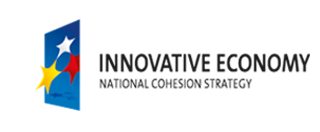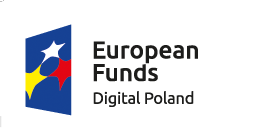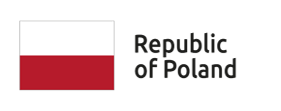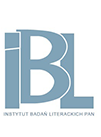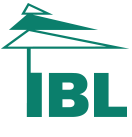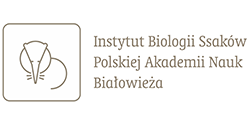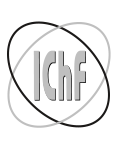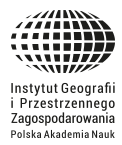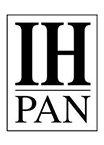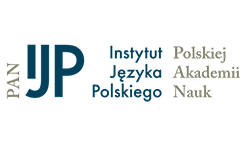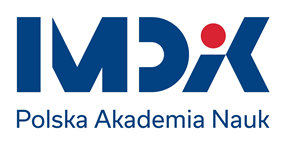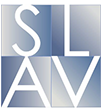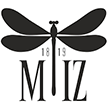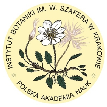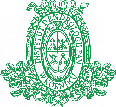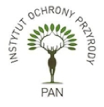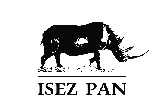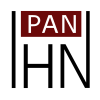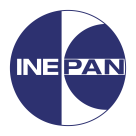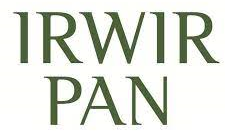- Search in all Repository
- Literature and maps
- Archeology
- Mills database
- Natural sciences
Advanced search
Advanced search
Advanced search
Advanced search
Advanced search

Object
Title: Źródła informacji dla rolnictwa – analiza powiązań między serwisami WWW
Publisher:
Instytut Rozwoju Wsi i Rolnictwa Polskiej Akademii Nauk
Place of publishing:
Type of object:
Abstract:
Celem artykułu jest ukazanie powiązań między serwisami WWW podmiotów, które uznano za istotne z perspektywy dostarczania informacji i wiedzy dla rolników. Relację między analizowanymi serwisami WWW określono poprzez analizę hiperłączy. Zakładając, iż hiperłącza znajdujące się na internetowych stronach odsyłają użytkownika do następnej strony o powiązanej treści, można określić, czy analizowane instytucje funkcjonują w sieci, co umożliwiałoby szybki dostęp do komplementarnych informacji. Badania pozwoliły określić kilka istotnych aspektów występujących powiązań. Po pierwsze, serwis WWW Ministerstwa Rolnictwa i Rozwoju Wsi jest punktem centralnym sieci powiązań. Po drugie, silniejsze powiązania występują między instytucjami tego samego typu niż między należącymi do różnych kategorii.
References:
Barabási A.L., 2003: Linked: How Everything is Connected to Everything Else and What It Means. Plume, New York.
Barabási A.L., 2007: The architecture of complexity. “IEEE Control Systems Magazine” 4: 33−42.
![]()
Barabási A.L., Bonabeau E., 2003: Scale − Free Networks. “Scientific American” 288: 50−59.
![]()
Boschma R., 2005: Proximity and Innovation: a Critical Assessment. “Regional Studies” 39: 61−74.
![]()
Boschma R., Lambooy J.G., 1999: Evolutionary Economics and Economic Geography. “Journal of Evolutionary Economics” 9: 411−429.
![]()
De Maeyer J., 2012: Towards a hyperlinked society: A critical review of link studies. New Media & Society (forthcoming).
![]()
Etzkowitz H., Leydesdorff L., 2000: The Dynamics of Innovation: from National System and ‘Mode 2’ to a Triple Helix of University – Industry − Government Relations. “Research Policy” 29: 109−123.
![]()
Floriańczyk Z., Czapiewski K., Stawicka E., 2007: Rural technology transfer in transition economies in Poland. Report for CEEC AGRI POLICY project. AgriPolicy.net.
Gertler M.S., 2003: Tacit knowledge and the economic geography of context, or the undefinable tacitness of being (there). “Journal of Economic Geography” 3: 75−99.
![]()
Halavais A., 2012: Wyszukiwarki internetowe a społeczeństwo. Wydawnictwo Naukowe PWN, Warszawa.
Harries G., Wilkinson D., Price L., Fairclough R., Thelwall M., 2004: Hyperlinks as a data source for science mapping. “Journal of Information Science” 30: 436−447.
![]()
Ingwersen P., Björneborn L., 2005: Methodological issues of webometric studies. “Handbook of Quantitative Science and Technology Research” 2: 339−369.
![]()
Janc K., 2011: Geografia hiperlinków – przestrzenny wymiar samorządowych serwisów internetowych. „Studia Regionalne i Lokalne” 4 (46): 30−50.
Janc K., 2012: Possibilities of hyperlink application in spatial research. “Bulletin of Geography. Socio-economic Series” 17 (1): 57−65.
![]()
Johnson T.G., 2001: The Rural Economy in a New Century. “International Regional Science Review” 24: 21−37.
![]()
Kania J., 2007: Doradztwo rolnicze w Polsce w świetle potrzeb i doświadczeń zagranicznych. Zeszyty Naukowe Akademii Rolniczej im. Hugona Kołłątaja w Krakowie. Rozprawy 318. Wydawnictwo Akademii Rolniczej, Kraków.
Kania J., Drygas M., Kutkowska B., Kalinowski J., 2011: System transferu wiedzy dla sektora rolno-spożywczego – oczekiwane kierunki rozwoju. “Polish Journal of Agronomy” 7: 22–28.
Khan G.F., Park H.W., 2011: Measuring the triple helix on the web: Longitudinal trends in the university-industry-government relationship in Korea. “Journal of the American Society for Information Science and Technology” 62: 2443–2455.
![]()
Maggioni M.A., Uberti T.E., 2009: Knowledge networks across Europe: which distance matters? “Annals of Regional Science” 43: 691−720.
![]()
Malecki E.J., 2003: Digital development in rural areas: potentials and pitfalls. “Journal of Rural Studies” 19: 201−214.
![]()
Malecki E.J., Moriset B., 2008: The Digital Economy. Business organization, production processes, and regional development. Routledge, Oxon.
Mitchell M., 2009: Complexity: A Guided Tour. Oxford University Press, New York.
![]()
Nonaka I., Takeuchi H., 1995: The knowledge-creating company. How Japanese companies create the dynamics of innovation. Oxford University Press, New York.
![]()
Nowak P., 2008: Bibliometria. Webometria. Podstawy. Wybrane zastosowania. Wydawnictwo Naukowe UAM, Poznań.
Ortega J.L., Aguillo I.F., 2008: Linking patterns in European Union countries: geographical maps of the European academic web space. “Journal of Information Science” 35: 705−714.
![]()
Ortega J.L., Aguillo I.F., 2009: Mapping word-class universities on the web. “Information Processing & Management” 45: 272−279.
![]()
Park H.W., 2010: Mapping the e-science landscape in South Korea using the webometrics method. “Journal of Computer-Mediated Communication” 15: 211−229.
![]()
Réka A., Jeong H., Barabási A.L., 1999: Diameter of the World-Wide Web. “Nature” 401 (6749): 130−131.
![]()
Thelwall M., 2002: The top 100 linked-to pages on UK university web sites: high inlink counts are not usually associated with quality scholarly content. “Journal of Information Science” 28: 483−491.
![]()
Thelwall M., Tang R., Price L., 2003: Linguistic patterns of academic Web use in Western Europe. “Scientometrics” 56: 417−432.
![]()
Törnqvist G., 2004: Creativity in Time and Space. “Geografiska Annaler, B: Human Geography” 86: 227−244.
![]()
Tsvetovat M., Kouznetsov A., 2011: Social Network Analysis for Startups: Finding connections on the social web. O’Reilly Media, Sebastopol.
Vaughan L., Kipp M.E.I., Gao Y., 2007: Why are Websites co-linked? The case of Canadian universities. “Scientometrics” 72: 81−92.
![]()
Warren M., 2007: The digital vicious cycle: Links between social disadvantage and digital exclusion in rural areas. “Telecommunications Policy” 31: 374−388.
![]()
Relation:
Issue:
Start page:
End page:
Resource Identifier:
oai:rcin.org.pl:242895 ; doi:10.53098/wir.2013.3.160/10 ; 0137-1673 (print); 2657-5213 (on-line)
Source:
Language:
Language of abstract:
Rights:
Licencja Creative Commons Uznanie autorstwa 4.0
Terms of use:
Digitizing institution:
Instytut Rozwoju Wsi i Rolnictwa Polskiej Akademii Nauk
Original in:
Biblioteka Instytutu Rozwoju Wsi i Rolnictwa PAN
Projects co-financed by:
Access:
Object collections:
- Digital Repository of Scientific Institutes > Literature > Journals/Articles
- Digital Repository of Scientific Institutes > Partners' collections > Institute of Rural and Agricultural Development PAS > Library collections
Last modified:
Mar 18, 2025
In our library since:
Dec 9, 2024
Number of object content downloads / hits:
0
All available object's versions:
https://rcin.org.pl./publication/279849
Show description in RDF format:
Show description in RDFa format:
Show description in OAI-PMH format:
| Edition name | Date |
|---|---|
| Źródła informacji dla rolnictwa – analiza powiązań między serwisami WWW | Mar 18, 2025 |
Objects Similar
Janc, Krzysztof Ilnicki, Dariusz
Janc, Krzysztof
Janc, Krzysztof
Janc, Krzysztof Siłka, Piotr
Floriańczyk, Zbigniew Janc, Krzysztof Czapiewski, Konrad
Puda-Blokesz, Magdalena
Instytut Badań Literackich
Wójtowicz, Aleksandra

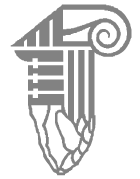 INSTYTUT ARCHEOLOGII I ETNOLOGII POLSKIEJ AKADEMII NAUK
INSTYTUT ARCHEOLOGII I ETNOLOGII POLSKIEJ AKADEMII NAUK
 INSTYTUT BADAŃ LITERACKICH POLSKIEJ AKADEMII NAUK
INSTYTUT BADAŃ LITERACKICH POLSKIEJ AKADEMII NAUK
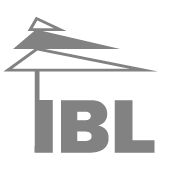 INSTYTUT BADAWCZY LEŚNICTWA
INSTYTUT BADAWCZY LEŚNICTWA
 INSTYTUT BIOLOGII DOŚWIADCZALNEJ IM. MARCELEGO NENCKIEGO POLSKIEJ AKADEMII NAUK
INSTYTUT BIOLOGII DOŚWIADCZALNEJ IM. MARCELEGO NENCKIEGO POLSKIEJ AKADEMII NAUK
 INSTYTUT BIOLOGII SSAKÓW POLSKIEJ AKADEMII NAUK
INSTYTUT BIOLOGII SSAKÓW POLSKIEJ AKADEMII NAUK
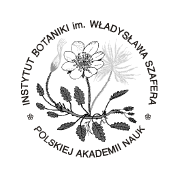 INSTYTUT CHEMII FIZYCZNEJ PAN
INSTYTUT CHEMII FIZYCZNEJ PAN
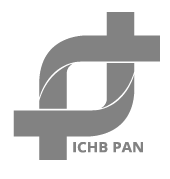 INSTYTUT CHEMII ORGANICZNEJ PAN
INSTYTUT CHEMII ORGANICZNEJ PAN
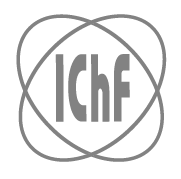 INSTYTUT FILOZOFII I SOCJOLOGII PAN
INSTYTUT FILOZOFII I SOCJOLOGII PAN
 INSTYTUT GEOGRAFII I PRZESTRZENNEGO ZAGOSPODAROWANIA PAN
INSTYTUT GEOGRAFII I PRZESTRZENNEGO ZAGOSPODAROWANIA PAN
 INSTYTUT HISTORII im. TADEUSZA MANTEUFFLA POLSKIEJ AKADEMII NAUK
INSTYTUT HISTORII im. TADEUSZA MANTEUFFLA POLSKIEJ AKADEMII NAUK
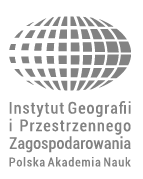 INSTYTUT JĘZYKA POLSKIEGO POLSKIEJ AKADEMII NAUK
INSTYTUT JĘZYKA POLSKIEGO POLSKIEJ AKADEMII NAUK
 INSTYTUT MATEMATYCZNY PAN
INSTYTUT MATEMATYCZNY PAN
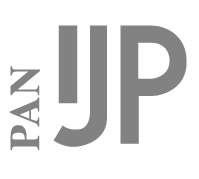 INSTYTUT MEDYCYNY DOŚWIADCZALNEJ I KLINICZNEJ IM.MIROSŁAWA MOSSAKOWSKIEGO POLSKIEJ AKADEMII NAUK
INSTYTUT MEDYCYNY DOŚWIADCZALNEJ I KLINICZNEJ IM.MIROSŁAWA MOSSAKOWSKIEGO POLSKIEJ AKADEMII NAUK
 INSTYTUT PODSTAWOWYCH PROBLEMÓW TECHNIKI PAN
INSTYTUT PODSTAWOWYCH PROBLEMÓW TECHNIKI PAN
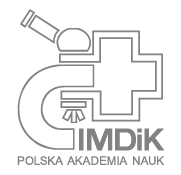 INSTYTUT SLAWISTYKI PAN
INSTYTUT SLAWISTYKI PAN
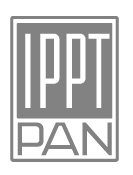 SIEĆ BADAWCZA ŁUKASIEWICZ - INSTYTUT TECHNOLOGII MATERIAŁÓW ELEKTRONICZNYCH
SIEĆ BADAWCZA ŁUKASIEWICZ - INSTYTUT TECHNOLOGII MATERIAŁÓW ELEKTRONICZNYCH
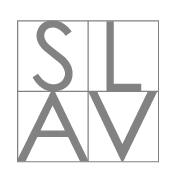 MUZEUM I INSTYTUT ZOOLOGII POLSKIEJ AKADEMII NAUK
MUZEUM I INSTYTUT ZOOLOGII POLSKIEJ AKADEMII NAUK
 INSTYTUT BADAŃ SYSTEMOWYCH PAN
INSTYTUT BADAŃ SYSTEMOWYCH PAN
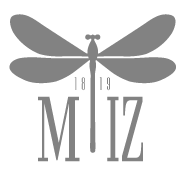 INSTYTUT BOTANIKI IM. WŁADYSŁAWA SZAFERA POLSKIEJ AKADEMII NAUK
INSTYTUT BOTANIKI IM. WŁADYSŁAWA SZAFERA POLSKIEJ AKADEMII NAUK

